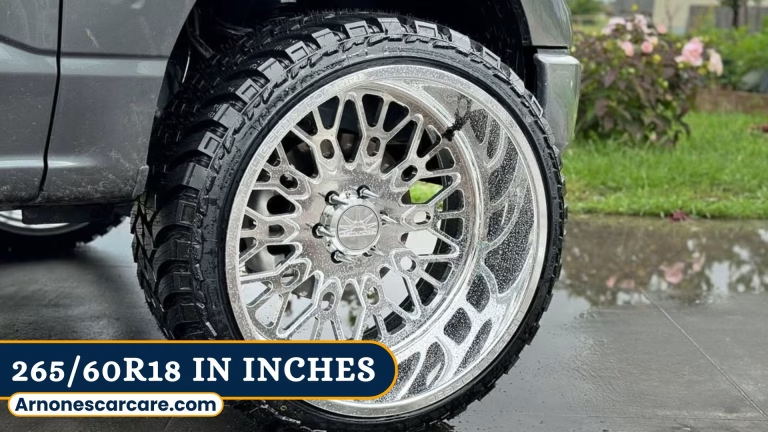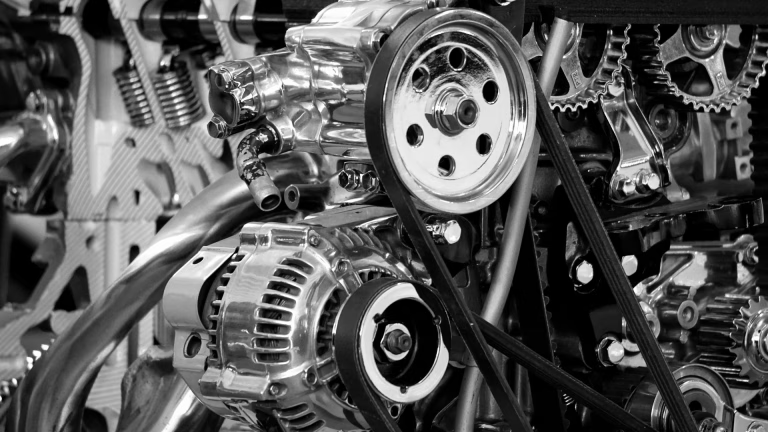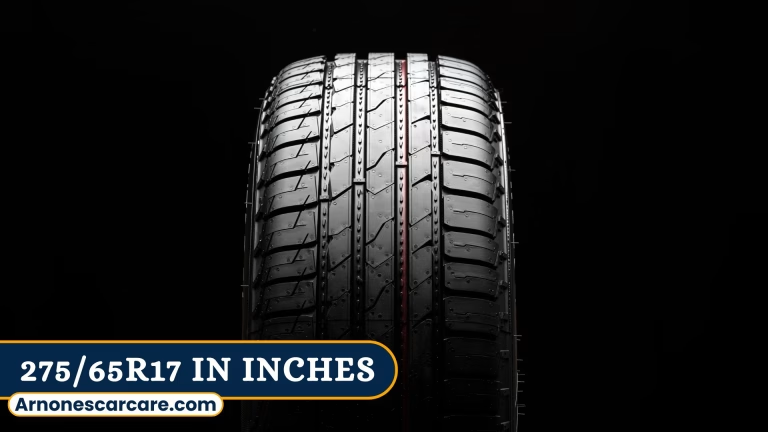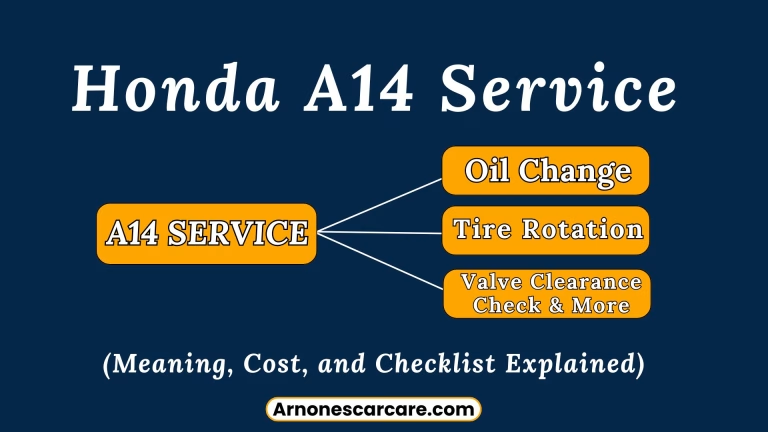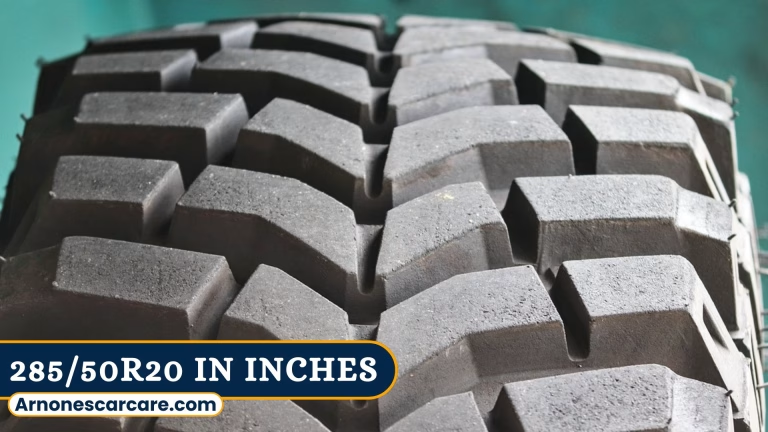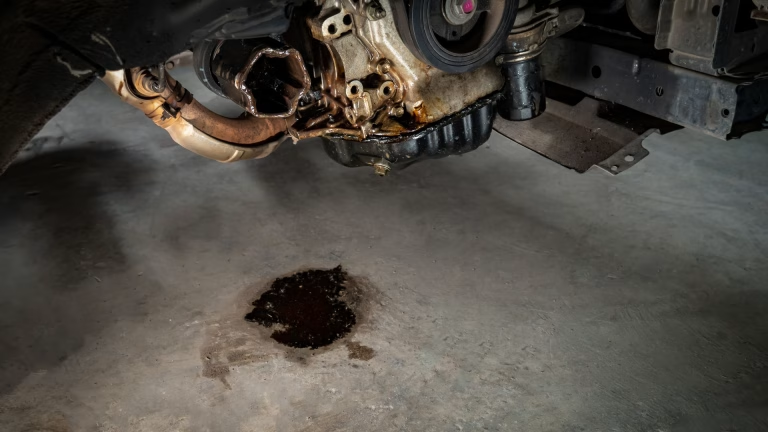
When it comes to your vehicle’s braking system, one of the most important components is the brake rotors. These metal discs play a crucial role in ensuring that your car stops safely and efficiently.
However, like all parts of your car, brake rotors can wear out over time, leading to potential safety hazards. If you notice signs of wear, such as vibrations, noises, or visual damage, it’s important to replace your brake rotors promptly to maintain your safety on the road.
In this article, you’ll learn the importance of brake rotors and how to know when they need replacing. Keeping them in good shape keeps you safe on the road.
What Are Brake Rotors?
Brake rotors, also known as brake discs, are the flat, circular metal components that are attached to the wheel hubs of your car. When you press the brake pedal, brake pads squeeze the rotors, creating the friction needed to slow or stop the vehicle.
The friction between the brake pads and rotors generates heat, and the rotors are designed to absorb and dissipate that heat to prevent overheating.
Understanding How Brake Rotors Work
To know why you need to replace brake rotors on time, it helps to understand how they work. Brake rotors help stop your car. When you press the brake pedal, the brake pads press against the rotors. This makes friction, which slows down your wheels.
Here’s how they work step by step:
- Pads Press Rotors: The brake pads press tightly on the rotors. This makes your car slow down.
- Heat Handling: The rotors take the energy and turn it into heat. They must cool down fast to work well.
- Calipers Help: Calipers push the pads onto the rotors. They create the pressure you need to stop.
- Stay Safe: Always check your rotors. Keeping them in good shape helps your brakes work better and keeps you safe.
Why Are Good Brake Rotors So Important?
Your brake rotors directly affect how safely your car stops. Here’s why they matter:
- Safety First: Bad rotors mean longer stopping distances, which could cause accidents
- Smooth Stops: Good rotors provide even, judder-free braking
- Protect Other Parts: Worn rotors can damage other brake parts like pads and calipers
- Prevent Complete Brake Failure: Extremely worn rotors can crack or break completely
- Save Money: Catching rotor problems early prevents more expensive repairs later.
Clear Signs Your Brake Rotors Need Replacement
Brake rotors play a key role in helping your car stop safely. They work with the brake pads to slow down your wheels. Over time, rotors wear out or get damaged. Replacing them at the right time keeps your brakes working well. Below are clear signs it might be time for new rotors.
1. Vibration When Braking
If the brake rotor has uneven thickness, it may cause a shaking feeling when braking. This happens when parts of the rotor wear down faster than others. A mechanic can check this using a tool called a micrometer. Uneven rotors should be replaced or resurfaced quickly.
2. Unusual Noises During Braking
Your brakes should work quietly. Any of these sounds means trouble:
- Squealing or Screeching: High-pitched noises often mean your brake pads are extremely worn and the wear indicators (small metal tabs) are touching the rotors
- Grinding Noises: This scary sound means metal-on-metal contact—your pads are completely worn out and the metal backing is grinding against your rotors
- Thumping or Clunking: Could indicate warped rotors or even cracks
- Clicking: This might mean loose rotors or related hardware problems
3. Cracks from Stress
Cracks on the rotor surface show that it’s been under too much pressure or heat. Even small cracks can grow and weaken the rotor. If you see any cracking, it’s time for a replacement. Cracked rotors are unsafe and can fail while driving.
4. Deep Rust Trouble
Some rust is normal, but deep rust or pitting is not. Rain or road salt can eat into the metal. This can weaken the rotor and make braking less smooth. If rust looks bad or flaky, have the rotors checked or replaced soon.
5. Warping
Too much heat can cause rotors to bend, or warp. You’ll notice a pulsing brake pedal or shaking steering wheel. This usually happens after hard or frequent braking. Warped rotors reduce brake power and should be replaced as soon as possible for safe driving.
6. Pads Gone, Rotors at Risk
When your brake pads wear out, they can damage your rotors. If you’re already changing pads, always inspect the rotors too. If they’re thin or scratched, it’s smart to replace them. This keeps your brakes strong and your car safe.
7. Shaky Stops
If your car shakes when braking, your rotors may be uneven or bent. This means they don’t grip smoothly. Vibrations make braking harder and less safe. Don’t ignore it—get the rotors checked and fixed to restore smooth braking.
8. Dashboard Brake Warning
Some cars have a brake warning light. If it turns on, something in the system may be worn or failing. This could include worn rotors. Never ignore the warning. Get your brake system inspected right away for your safety.
9. Thin Rotors
All rotors have a minimum safe thickness (sometimes called “discard thickness”). This measurement is often stamped on the rotor edge or can be found in your car’s manual. Rotors that are too thin:
- Can’t absorb and disperse heat properly
- Are more likely to warp or crack
- Provide less effective braking
- Can be dangerous in emergency situations
10. The Car Pulls to One Side When Braking
When one rotor is more worn than the others, your car might pull left or right when you brake. This happens because the braking force is uneven from side to side. This is not only annoying but dangerous, as it can make emergency stops unpredictable.
11. Longer Stopping Distance
If your car takes longer to stop than it used to, your rotors could be worn down. This is dangerous, especially in emergency situations. Pay attention to if:
- You need to press the brake pedal harder than before
- Your car doesn’t slow down as quickly as it once did
- You feel like the brakes are “soft” or “spongy.”
When to Replace Brake Rotors?
Knowing the right time to change your brake rotors is very important. It helps keep your car safe and working well. Most brake rotors last between 30,000 and 70,000 miles. But this can change. How you drive and what type of brake pads you use can make a big difference.
If your brake pads are strong and good at handling heat, your rotors may last longer. But rough roads, bad weather, and road salt can wear them down faster. It’s also a smart idea to replace your brake pads before they get too thin. This helps protect the rotors and keeps your brakes working smoothly.
Check your brakes often. Regular checks can help you avoid big brake problems and expensive repairs later. Staying on top of brake care keeps you safe on the road.
When to Replace vs. Resurface?
Sometimes you can resurface (or “turn”) rotors instead of replacing them. This means machining them to be smooth again. However:
- Modern rotors are thinner than older ones
- Many shops recommend replacement since it’s often cheaper than labor for resurfacing
- You should replace rotors if they’re below the minimum thickness
- You should replace rotors if they have cracks
Do You Really Need to Replace Rotors Every Time You Get New Brake Pads?
This is perhaps the most common question about rotors. Here’s the honest truth:
- Not Always Necessary: Quality rotors can last through 2-3 brake pad changes
- Why Shops Recommend It: Many shops recommend replacement because:
- It ensures customer satisfaction with no comebacks
- It’s simpler than measuring and determining if resurfacing is possible
- Labor costs to remove, resurface and reinstall can exceed new rotor costs
- It reduces their liability if old rotors cause problems later
- When It’s Definitely Needed:
- If rotors have visible damage
- If there’s a pulsation or vibration when braking
- If rotors are near minimum thickness
- If rotors are rusted or deeply grooved
How Long Do Brake Rotors Last?
The lifespan of brake rotors depends on many factors:
- Driving Style: Hard, frequent braking wears rotors faster
- Environment: Salt, moisture, and dirt speed up wear and corrosion
- Vehicle Type: Heavier vehicles put more stress on rotors
- Quality of Rotors: Original equipment (OE) or premium aftermarket rotors typically last longer
- Type of Driving: Highway driving is easier on rotors than stop-and-go city driving
- Maintenance: Regular brake inspections help catch issues early
On average, expect rotors to last:
- 30,000-70,000 miles for most passenger cars
- As little as 15,000-30,000 miles for performance cars or vehicles driven hard
- Up to 100,000 miles for light-duty vehicles with gentle driving habits
How to Check Your Rotors At Home (No Experience Needed)
Even if you’ve never looked at car parts before, you can do these simple checks:
Visual Inspection:
- Park on level ground and set the parking brake
- Look through your wheel spokes at the rotor surface
- The surface should be relatively smooth and uniform in color
- Look for grooves, cracks, rust, or blue areas
Feel Test (ONLY with car off and cooled down!):
- Make sure the engine is OFF and the car has been sitting for at least 30 minutes
- Touch the rotor surface through the wheel spokes
- It should feel smooth with no major ridges or grooves
- Any deep grooves or rough areas suggest wear problems
Listen Test:
- While driving at low speed in an empty parking lot
- Apply the brakes gently
- Listen for any unusual noises
- Squealing, grinding, or thumping are all warning signs
Brake Response Test:
- In a safe, empty area
- Drive at a low speed (under 20 mph)
- Apply brakes normally
- Notice if the car stops evenly or if there’s vibration
- NEVER test brakes in traffic or at high speeds!
What Happens If You Ignore Bad Rotors?
Continuing to drive with bad rotors can lead to:
- Extended Stopping Distance: Dangerous in emergencies
- Complete Brake Failure: In worst cases, badly worn rotors can break
- Damage to Other Components: Worn rotors can damage calipers and other parts
- Higher Repair Costs: What starts as a rotor problem becomes a complete brake job
- Loss of Vehicle Control: Especially dangerous in bad weather or emergency situations
How to Maintain Your Brake Rotors?
Maintaining your brake rotors can extend their lifespan and ensure your braking system performs optimally. Here are a few tips for rotor maintenance:
- Regular Inspections: Have your rotors inspected by a professional mechanic regularly. They can check for signs of wear, damage, and other issues that could affect braking performance.
- Brake Pad Replacement: Worn brake pads can cause excessive heat buildup and damage to your rotors. Be sure to replace brake pads before they wear down completely to prevent rotor damage.
- Driving Habits: Avoid heavy braking whenever possible. Aggressive driving can cause excessive heat and stress on the rotors, leading to premature wear.
- Brake Fluid Maintenance: Low or old brake fluid can affect the performance of your braking system. Keep your brake fluid at the correct level and replace it as needed.
FAQs
How to check router without removing wheel?
If your wheel design exposes the rotor, run your finger down its surface. If you feel deep grooves or rough spots, the rotor may need replacing.
How to tell if you need new rotors or just brake pads?
If you hear squealing, feel vibrations, or notice deep grooves on the rotor, you may need new rotors. If stopping feels weak or you hear grinding, it could just be worn brake pads. A mechanic can confirm with a proper inspection.
How to tell if rotors are bad by looking at them?
Look for deep grooves, cracks, rust, or blue spots on the rotor surface—these mean the rotors are bad.
Final Thoughts
Brake rotors are a crucial part of your vehicle’s braking system, and their condition directly affects your car’s ability to stop safely. Regular inspections and maintenance are essential to ensure that your rotors are in good shape.
If you notice signs of wear, such as vibrations, noises, or visual damage, it’s important to replace your brake rotors promptly to maintain your safety on the road.
Always consult with a professional mechanic if you’re unsure about the condition of your brake rotors, and remember, it’s always better to replace them early than to risk brake failure.

